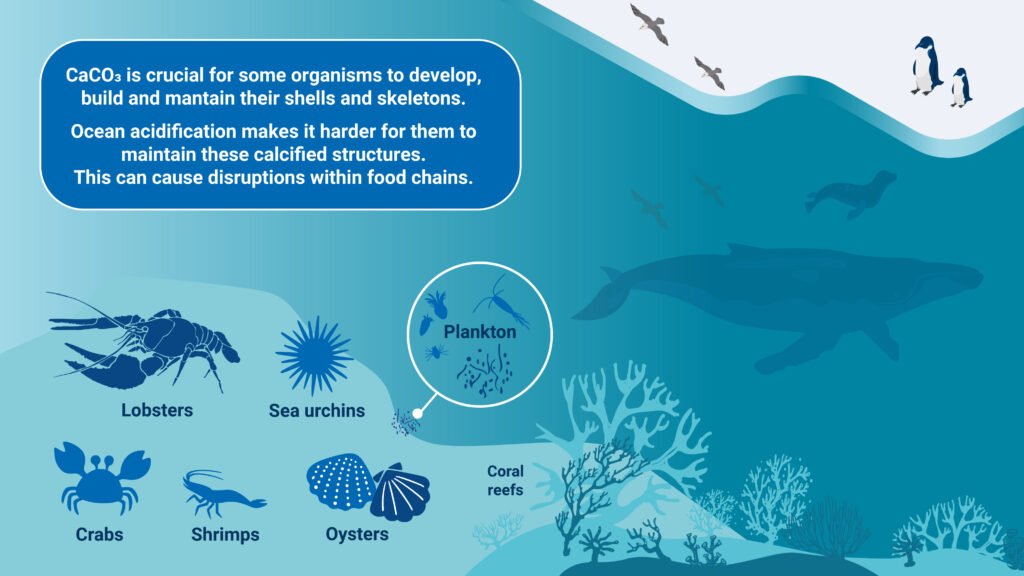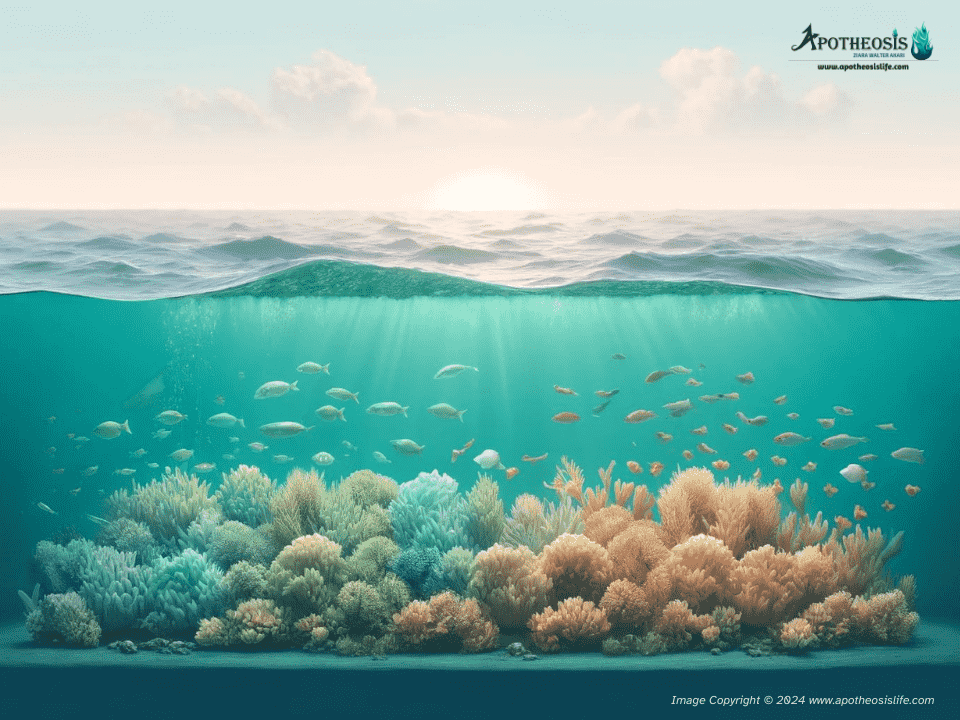Ocean acidification is a growing environmental concern, often referred to as the “evil twin” of climate change. As the oceans absorb more carbon dioxide (CO2) from the atmosphere, their chemistry changes, leading to a decrease in pH levels. This process, known as ocean acidification, has far-reaching implications for marine life, biodiversity, and the global economy.
The Science Behind Ocean Acidification
How It Happens: When CO2 is released into the atmosphere through human activities like burning fossil fuels and deforestation, about a quarter of it is absorbed by the oceans. While this helps reduce the amount of CO2 in the atmosphere, it also leads to a series of chemical reactions in seawater, forming carbonic acid. This acid dissociates into hydrogen ions and bicarbonate, increasing the acidity of the ocean and lowering its pH.
Impact on Marine Chemistry: As the ocean becomes more acidic, the availability of carbonate ions decreases. These ions are essential for marine organisms like corals, shellfish, and some plankton to build their calcium carbonate shells and skeletons. A reduction in carbonate ions makes it more difficult for these organisms to maintain their structures, leading to weaker shells and, in some cases, dissolving them altogether.
Impact on Marine Life
Coral Reefs: Coral reefs are particularly vulnerable to ocean acidification. As the pH of seawater drops, corals struggle to produce their calcium carbonate skeletons. This weakens the reef structure, making it more susceptible to erosion and less able to support the diverse marine life that depends on it.
Shellfish and Mollusks: Species like oysters, clams, and mussels rely on carbonate ions to form their shells. Ocean acidification reduces the availability of these ions, leading to thinner, more fragile shells. This not only affects the survival of these species but also impacts the industries and communities that rely on them.
Plankton: Plankton, which forms the base of the marine food web, is also affected by ocean acidification. Certain types of plankton use calcium carbonate to build their shells. A decline in plankton populations can have cascading effects throughout the entire oceanic food chain.
Fish Behavior and Physiology: Research has shown that ocean acidification can affect the behavior and physiology of fish. Changes in pH levels can impair sensory perception, reduce survival rates, and alter predator-prey interactions.

Graphic: A. Vargas Terrones /IAEA
Economic and Social Implications
Impact on Fisheries and Aquaculture: The fishing and aquaculture industries are directly affected by ocean acidification. As shellfish populations decline and fish behavior changes, the livelihoods of those who depend on these industries are at risk. Coastal communities, particularly those in developing countries, may face economic hardships as fish stocks dwindle and the cost of seafood rises.
Tourism and Coral Reefs: Coral reefs attract millions of tourists each year, supporting local economies. However, as ocean acidification damages these ecosystems, the appeal of coral reefs as tourist destinations diminishes. This can lead to a loss of income for communities that rely on tourism.
Global Economy: The economic impact of ocean acidification extends beyond local communities. Disruptions in the marine food web can affect global fish stocks, leading to higher prices and reduced food security. The loss of biodiversity and ecosystem services provided by the oceans can also have long-term economic consequences.
Mitigation and Adaptation Strategies
Reducing CO2 Emissions: The most effective way to combat ocean acidification is to reduce CO2 emissions. Transitioning to renewable energy sources, improving energy efficiency, and adopting sustainable land-use practices are essential steps in this direction.
Marine Protected Areas: Establishing marine protected areas (MPAs) can help safeguard vulnerable ecosystems from the impacts of ocean acidification. MPAs can provide refuges for marine life, allowing populations to recover and adapt to changing conditions.
Research and Monitoring: Ongoing research and monitoring are critical for understanding the full impact of ocean acidification and developing effective adaptation strategies. Enhanced monitoring can provide early warnings of changes in ocean chemistry, allowing for timely interventions.
Restoration Projects: Restoration projects, such as planting seagrasses and restoring mangroves, can help mitigate the effects of ocean acidification. These ecosystems act as carbon sinks, absorbing CO2 and buffering against pH changes.
Ocean acidification is a silent threat with profound implications for marine ecosystems and human societies. While the challenges are significant, there are steps we can take to mitigate the impact and adapt to the changes. By reducing CO2 emissions and protecting marine environments, we can help preserve the health of our oceans and ensure a sustainable future for all.
Author
Ziara Walter Akari
© www.apotheosislife.com
